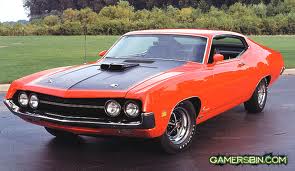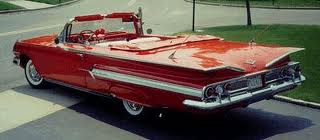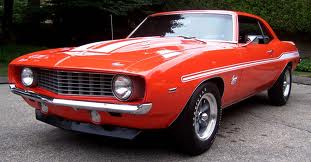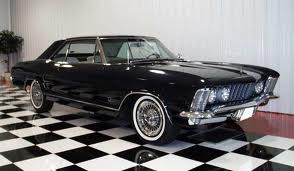The definitive guide to muscle cars, if you ever wondered, or just wondered how the experts qualify the muscle cars. The term wasn’t even used until the late 1970s, in the 1960s there were often called “Super Cars” if called anything at all. Therefore, the actual definition of a muscle car, or which models were muscle cars, is a topic that is often disputed.
Definition of a Muscle Car:
A muscle car, by the strictest definition, is an intermediate sized, performance oriented model, powered by a large V8 engine, at an affordable price. Most of these models were based on “regular” production vehicles. These vehicles are generally not considered muscle cars, even when equipped with large V8s. If there was a high performance version available, it gets the credit, and not the vehicle that it was based on.
Examples: Buick GS, Chevrolet Chevelle SS, Dodge Charger R/T, Ford Torino/Cobra, Plymouth GTX, Plymouth Road Runner, Oldsmobile 442, Pontiac GTO
Fullsize Muscle Car:
 The strict definition only includes intermediate size vehicles. In reality, performance oriented intermediate size vehicles didn’t appear until 1964. Before then, manufacturers took existing fullsize vehicles and added extra performance to them. Because of this, the early fullsize performance vehicles are generally considered muscle cars.
The strict definition only includes intermediate size vehicles. In reality, performance oriented intermediate size vehicles didn’t appear until 1964. Before then, manufacturers took existing fullsize vehicles and added extra performance to them. Because of this, the early fullsize performance vehicles are generally considered muscle cars.
Examples: Chevrolet Impala (SS only), Ford Galaxie (with 390 + cid engines only), Dodge Coronet (R/Ts only), etc.
Pony Cars and Compact Cars:
 In addition to fullsize and intermediate muscle cars, a number of smaller vehicles started appearing on the automotive performance scene. These new “pony cars” and compact cars are generally considered muscle cars only if they have the top of the line performance engines and options.
In addition to fullsize and intermediate muscle cars, a number of smaller vehicles started appearing on the automotive performance scene. These new “pony cars” and compact cars are generally considered muscle cars only if they have the top of the line performance engines and options.
Examples: Chevrolet Camaro (SS and Z28 models only), Ford Mustang (GTs and Boss only), Plymouth ‘Cudas (no Barracudas), AMC Javelin, etc.
Personal Luxury Cars and Luxury Cars:

Although there were several personal luxury vehicles with performance engines and options, their heavy weight and high sticker prices went against the low cost performance definition of muscle cars. Therefore, they are not considered muscle cars.
Examples: Buick Riviera, Chrysler 300 Letter Cars, Pontiac Grand Prix, etc.
Two Seat Sports Cars:
Two seat sports cars such as the Chevrolet Corvette and the Ford Thunderbird are not considered muscle cars due to their high price and specialty nature. The only exception is the AMC AMX as it was relatively cheap, and was based on the AMC Javalin pony car.
Examples: AMC AMX, etc.
Additional resources on muscle cars can be found at http://www.musclecarclub.com/musclecars/general/musclecars-definition.shtml
Ross Carburetors specializes in custom rebuilds and restoration on all types of carburetors. We’ve been providing top-level service and production to customers since 1994.